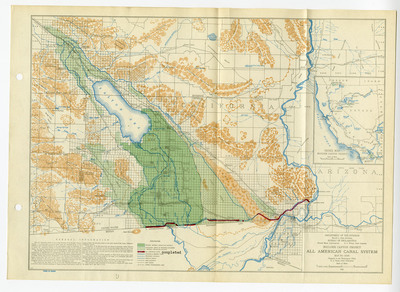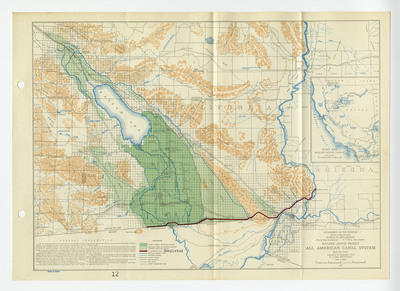Hi everyone,
Excitement at NARA for New SAA President
This past week at the National Archives brought with
it much excitement over the appointment of the new President of the Society of
American Archivists (SAA). For the first time since the 1990-1991 Presidency of
Trudy Huskamp Peterson, a NARA
employee has once again been selected to serve as the SAA President. Dr. Meredith
Evans started her tenure with NARA in 2015 as the Director of the Jimmy Carter
Presidential Library and Museum, a position she still holds today. Instillation
of the new President occurred this week at the end of the SAA/CoSA/NAGARA Joint
Annual Meeting held in Washington, DC. To mark the special occasion of her SAA
appointment, Dr. Evans gave a webcasted teleconference to all of NARA staff. Her talk focused on her own career path, the importance of the archival profession and
professional engagement, and her vision for her upcoming SAA presidential year.
At the end of her talk, Dr. Evans opened up a forum for questions from the
staff. NARA staff are all looking forward to witnessing Dr. Evans flourish as
President of the SAA.
Cheerful in a snug little cottage
I always enjoy reading Mr. Frankish’s personal letters-
particularly the ones he wrote to his family members. I live in Claremont so it
all feels deeply surreal. Since I started working as CLIR Fellow, I have found
that the words “Ontario” and “Euclid” mean much more than what I originally anticipated.
The following is a letter he wrote to his uncle in 1888,
“We are all very sorry
to hear of your continued indisposition as we had hopes to have seen you out
here by this time – you had better bring Aunt Lois along and put up a snug
little cottage and settle down comfortably – we hope Grandpa’s rheumatism is
better and are glad to know that all the rest are well –
Well we have got over
the elections, are having splendid rains, Easterners are beginning to come in
and things generally are assuming a cheerful aspect, that is to those who want
to be cheerful, but we have some people here (not very distant relations
either) who never are and never will be happy or contented.”
One day, I hope to have a snug
little cottage in these parts of the country. But above all, I strive to be
cheerful and content.
Normal
0
false
false
false
EN-US
X-NONE
X-NONE
/* Style Definitions */
table.MsoNormalTable
{mso-style-name:”Table Normal”;
mso-tstyle-rowband-size:0;
mso-tstyle-colband-size:0;
mso-style-noshow:yes;
mso-style-priority:99;
mso-style-parent:””;
mso-padding-alt:0in 5.4pt 0in 5.4pt;
mso-para-margin-top:0in;
mso-para-margin-right:0in;
mso-para-margin-bottom:10.0pt;
mso-para-margin-left:0in;
line-height:115%;
mso-pagination:widow-orphan;
font-size:11.0pt;
font-family:”Calibri”,”sans-serif”;
mso-ascii-font-family:Calibri;
mso-ascii-theme-font:minor-latin;
mso-hansi-font-family:Calibri;
mso-hansi-theme-font:minor-latin;}
Normal
0
false
false
false
EN-US
X-NONE
X-NONE
/* Style Definitions */
table.MsoNormalTable
{mso-style-name:”Table Normal”;
mso-tstyle-rowband-size:0;
mso-tstyle-colband-size:0;
mso-style-noshow:yes;
mso-style-priority:99;
mso-style-parent:””;
mso-padding-alt:0in 5.4pt 0in 5.4pt;
mso-para-margin-top:0in;
mso-para-margin-right:0in;
mso-para-margin-bottom:10.0pt;
mso-para-margin-left:0in;
line-height:115%;
mso-pagination:widow-orphan;
font-size:11.0pt;
font-family:”Calibri”,”sans-serif”;
mso-ascii-font-family:Calibri;
mso-ascii-theme-font:minor-latin;
mso-hansi-font-family:Calibri;
mso-hansi-theme-font:minor-latin;}
Appreciation for Digitization of Scholarship Resources
Hello everyone,
My name is Cindy and this is my second week as a Council on
Library and Information Resources (CLIR) Claremont Center for Engagement with
Primary Sources (CCEPS) fellow. I am excited to contribute to the efforts to
digitize our Southern California water resources from the 19th to
the 20th centuries. These time points will allow us to understand
the efforts of water development from the lens of federal, state, and local
governments to the efforts from water companies and engineers. I believe this information will be significant
as these perspectives will be important to understand the future of water
conservation and help support future research.
This week I was scanning the San Bernardino County Flood
Control District: flood control reports from 1939 to 1949, along with Biennial/Annual Reports
from 1959 to 1962. Scanning these items has allowed me to have a further
appreciation for technology advances in scholarship and research. The ability
to quickly search and find online versions of documents can be overlooked. Therefore,
I am thankful for those who have contributed to the digitization of research
and scholarship. I look forward to
working with my fellow CCEPs fellows and Special Collections Staff.
Normal
0
false
false
false
EN-US
X-NONE
X-NONE
/* Style Definitions */
table.MsoNormalTable
{mso-style-name:”Table Normal”;
mso-tstyle-rowband-size:0;
mso-tstyle-colband-size:0;
mso-style-noshow:yes;
mso-style-priority:99;
mso-style-parent:””;
mso-padding-alt:0in 5.4pt 0in 5.4pt;
mso-para-margin-top:0in;
mso-para-margin-right:0in;
mso-para-margin-bottom:10.0pt;
mso-para-margin-left:0in;
line-height:115%;
mso-pagination:widow-orphan;
font-size:11.0pt;
font-family:”Calibri”,”sans-serif”;
mso-ascii-font-family:Calibri;
mso-ascii-theme-font:minor-latin;
mso-hansi-font-family:Calibri;
mso-hansi-theme-font:minor-latin;}
The Long Goodbye Part 2
While reading through the myriad of statements on the California Water Project given before various water committees in the early 1960s, I was struck by one in particular entitled “Without Vision — and Unity — the People Perish.” This speech was written by William E. Warne, the Director of the State Department of Water Resources, and, as you can probably tell by the title, is quite dramatic for an address given at a regular Town Hall Luncheon. What stood out to me the most was the apocalyptic imagery Warne used to describe a future California in which the California Water Project had not come to fruition. He compares this desolate potential reality to previous civilizations like Persia, as “four times as many people lived in Persia years ago as are the same area in modern Iran today” and the Persian canals are but the merest traces in the desert now.” Being a (tentative) history major, reading for this project provided me with the realization that because I take water for granted, I never considered the copious amounts of engineering and labor that must have gone into projects like the Roman aqueducts and Persian canals. Warne’s persuasive speech has engendered in me an interest in the history of water transportation that I’d like to read about in the remaining days of summer vacation.
File Name Tracker and PDF/As
Hi everyone,
A quaint week
week I have been filling in the Frankish Letters Book 1 excel file that I have
been working on with tons of useful information such as Archival
Collection/Call number, hardware/software used…ect. This organization will make
my job easier in the next few weeks as I move on to upload the files.
is afoot.
Normal
0
false
false
false
EN-US
X-NONE
X-NONE
/* Style Definitions */
table.MsoNormalTable
{mso-style-name:”Table Normal”;
mso-tstyle-rowband-size:0;
mso-tstyle-colband-size:0;
mso-style-noshow:yes;
mso-style-priority:99;
mso-style-parent:””;
mso-padding-alt:0in 5.4pt 0in 5.4pt;
mso-para-margin-top:0in;
mso-para-margin-right:0in;
mso-para-margin-bottom:10.0pt;
mso-para-margin-left:0in;
line-height:115%;
mso-pagination:widow-orphan;
font-size:11.0pt;
font-family:”Times New Roman”,”serif”;}
Coachella Valley Dates
Have you even eaten a date? If so, odds are the tasty
fruit grew in Southern California! Each yearly report on the All-American Canal
project includes a section recording the agricultural production of the farms
within both the Coachella and Imperial Valleys. Crops grown in the area include
different strains of grains, as well as a wide variety of produce. Dates are
highlighted as a particularly valuable Coachella Valley crop. The statistic below,
regarding Coachella Valley dates, can be found in the 1937 report:
 Today, dates continue to be a valuable California
Today, dates continue to be a valuable California
crop. In 2015, California produced
43,600 tons, or 87,200,000 pounds, of dates from 10,000 acres. Yield per acre was 4.36
tons, priced at $1,560 per ton. The total value of the crop was $68 million (“Noncitrus
Fruits” NASS, 2016).[1]
Series: All-American Canal Project Histories,
1948-1954. Record Group 48: Records of the Office of the Secretary of the
Interior, 1826-2009. National Archives Identifier: 2292770
[1] For
more information about California Dates, see https://www.agmrc.org/commodities-products/fruits/dates
Best advice can come from unexpected places
pdf files in Frankish Book I. Next week I will venture on to a new task.
Frankish gives great advice and I’d grab a coffee with him any day. As I go
through his letters, I can see that he was an intelligent man and so much of
what he writes applies today. In a
letter to his sister, he writes, “trust in Providence and go on doing what one
believes to be right…..” Truer words have never been
spoken.
Normal
0
false
false
false
EN-US
X-NONE
X-NONE
/* Style Definitions */
table.MsoNormalTable
{mso-style-name:”Table Normal”;
mso-tstyle-rowband-size:0;
mso-tstyle-colband-size:0;
mso-style-noshow:yes;
mso-style-priority:99;
mso-style-parent:””;
mso-padding-alt:0in 5.4pt 0in 5.4pt;
mso-para-margin-top:0in;
mso-para-margin-right:0in;
mso-para-margin-bottom:10.0pt;
mso-para-margin-left:0in;
line-height:115%;
mso-pagination:widow-orphan;
font-size:11.0pt;
font-family:”Times New Roman”,”serif”;}
#CLIRwater Digitization Begins at NARA
Digitization of documents to be included in the CLIR water collection
began last week at the Riverside branch of the National Archives and Records
Administration (NARA). The first series digitized includes the project
histories of the All-American Canal. Construction on the canal commenced in
1934 and concluded in 1944. The All-American Canal flows along the California
and Mexico border where it provides water to several desert communities in
Southern California.
The maps below show the progress made on the canal during
the years 1936 and 1937. Note the thick, hand drawn, red line which represents
the completed sections of canal.
Record Group 48: Records of the Office of the Secretary of the Interior,
1826-2009. National Archives Identifier: 2292770

